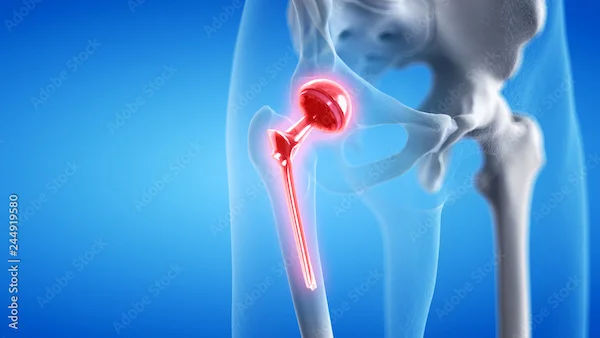How To Treat Muscle Spasms After Hip Replacement Surgery?
Learn how to treat muscle spasms after hip replacement surgery with effective methods including physical therapy, medications, and home remedies. Discover ways to ease discomfort and promote faster recovery.

Written by
Last updated on 3rd Jul, 2025

Introduction
Undergoing hip replacement surgery is a significant step toward improving mobility and reducing pain. However, the recovery process can sometimes come with challenges, including muscle spasms. If you're experiencing muscle spasms after your surgery, know that you're not alone. This is a common issue that many patients face. The good news is that there are effective ways to manage and treat these spasms to ensure a smoother recovery.
Understanding Muscle Spasms After Hip Replacement
Muscle spasms are sudden, involuntary contractions of one or more muscles. After hip replacement surgery, these spasms can occur due to several reasons, including:
Surgical trauma: The muscles and tissues around the hip joint may become irritated during surgery.
Muscle weakness: Prolonged inactivity before or after surgery can lead to muscle tightness and spasms.
Nerve irritation: Swelling or inflammation may temporarily affect nearby nerves, triggering spasms.
Changes in movement patterns: Your body may adjust to a new hip joint, causing muscles to work differently than before.
While muscle spasms can be uncomfortable, they are usually temporary and improve as your body heals.
Symptoms of Muscle Spasms
Muscle spasms after hip replacement surgery may feel like:
Sudden, sharp pain in the hip, thigh, or buttock.
A tight, cramping sensation that comes and goes.
Difficulty moving the leg due to stiffness.
If spasms are severe, persistent, or accompanied by swelling, redness, or fever, consult your doctor immediately, as these could indicate an infection or other complications.
Consult Top Specialists for Personalised Tips
Effective Ways to Treat Muscle Spasms
Some of the effective ways to treat muscle spasms are:
1. Gentle Stretching and Movement: Once your surgeon approves light activity, gentle stretching can help relax tight muscles. Try:
Seated leg lifts (slowly raising and lowering your leg while seated).
Ankle pumps (moving your foot up and down to improve circulation).
Walking short distances with a walker or cane as recommended.
Avoid sudden movements and always follow your physical therapist’s guidance.
2. Heat and Cold Therapy
Heat (a warm towel or heating pad) can relax tense muscles and improve blood flow. Apply for 15-20 minutes at a time.
Cold packs can reduce inflammation and numb sharp pain. Use ice wrapped in a cloth for 10-15 minutes.
3. Hydration and Nutrition: Dehydration and low levels of minerals like potassium, magnesium, and calcium can contribute to muscle spasms. Ensure you:
Drink plenty of water.
Eat bananas, leafy greens, nuts, and dairy products for essential nutrients.
4. Medications (If Needed): Your doctor may recommend:
Over-the-counter pain relievers (like acetaminophen).
Muscle relaxants for severe spasms (use only as prescribed).
5. Physical Therapy: A physical therapist can guide you through exercises to strengthen muscles, improve flexibility, and prevent spasms. Stick to your prescribed rehab plan for the best results.
6. Massage and Relaxation Techniques: Gentle massage around the hip and thigh can ease tension. Relaxation methods like deep breathing or meditation may also help reduce stress-related muscle tightness.
When to Seek Medical Help?
Most muscle spasms improve with self-care, but contact your doctor if:
Spasms are frequent and severe.
You notice increased swelling, warmth, or redness near the surgical site.
Pain doesn’t improve with rest and medication.
Preventing Future Muscle Spasms
Ways to prevent future muscle spasms are as follows:
Stay active (within your recovery limits).
Follow post-surgery exercises to rebuild strength.
Avoid sitting or standing too long in one position.
Wear supportive footwear to maintain proper posture.
Final Thoughts
Muscle spasms after hip replacement surgery can be frustrating, but with patience and the right care, they typically subside as your body heals. Listen to your body, follow medical advice, and don’t hesitate to reach out to your healthcare team if needed. If you're experiencing persistent discomfort, consider booking a consultation with an orthopaedic specialist through Apollo 24|7 for personalised guidance. Wishing you a smooth and successful recovery!
Consult Top Orthopaedic Surgeon
Consult Top Orthopaedic Surgeon

Dr. Keshav Digga
Orthopaedician
14 Years • MBBS, MS Orthopaedics, FIASM, FIMISS
Kolkata
DIGGA HEALTHCARE, Kolkata

Dr. Anil Pradeep Jadhav
Orthopaedician
23 Years • MBBS MS (Ortho)
Nashik
Apollo Hospitals Nashik, Nashik
(25+ Patients)

Dr. Bhanu Prakash Reddy Rachamallu
Orthopaedician
24 Years • MBBS , D'ORTHO, DNB (ORTHO), Mch (ORTHO), Fellow in ARTHROPLASTY
Hyderabad
Apollo Hospitals Jubilee Hills, Hyderabad
(75+ Patients)
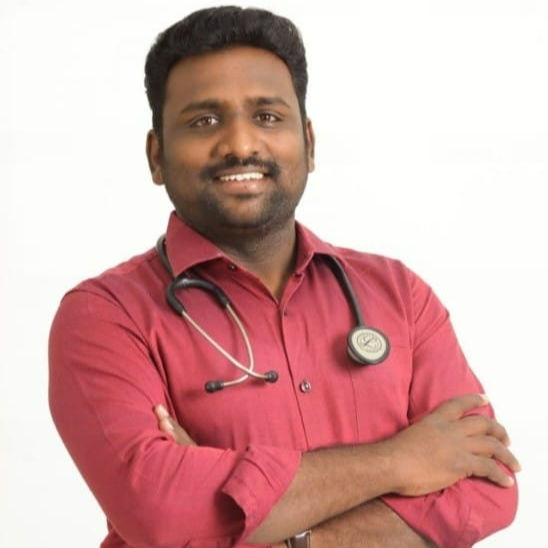
Dr. Pradeep Lucas
Orthopaedician
7 Years • MBBS, Diploma in Orthopaedics, Fellowship in DFSI
Bengaluru
Revival Multispeciality Clinic, Bengaluru
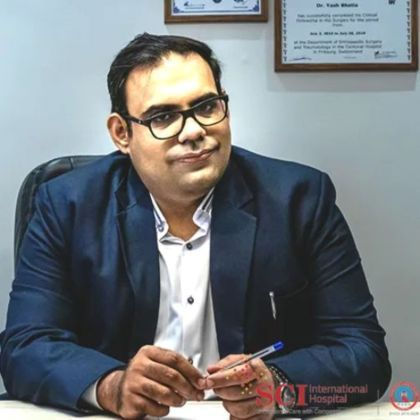
Dr. Yash Bhatia
Orthopaedician
14 Years • MBBS MS
Gurugram
DR YASH BHATIA ORTHOPAEDICS CENTRE, Gurugram
Consult Top Specialists for Personalised Tips

Dr. Keshav Digga
Orthopaedician
14 Years • MBBS, MS Orthopaedics, FIASM, FIMISS
Kolkata
DIGGA HEALTHCARE, Kolkata

Dr. Anil Pradeep Jadhav
Orthopaedician
23 Years • MBBS MS (Ortho)
Nashik
Apollo Hospitals Nashik, Nashik
(25+ Patients)

Dr. Bhanu Prakash Reddy Rachamallu
Orthopaedician
24 Years • MBBS , D'ORTHO, DNB (ORTHO), Mch (ORTHO), Fellow in ARTHROPLASTY
Hyderabad
Apollo Hospitals Jubilee Hills, Hyderabad
(75+ Patients)

Dr. Pradeep Lucas
Orthopaedician
7 Years • MBBS, Diploma in Orthopaedics, Fellowship in DFSI
Bengaluru
Revival Multispeciality Clinic, Bengaluru

Dr. Yash Bhatia
Orthopaedician
14 Years • MBBS MS
Gurugram
DR YASH BHATIA ORTHOPAEDICS CENTRE, Gurugram

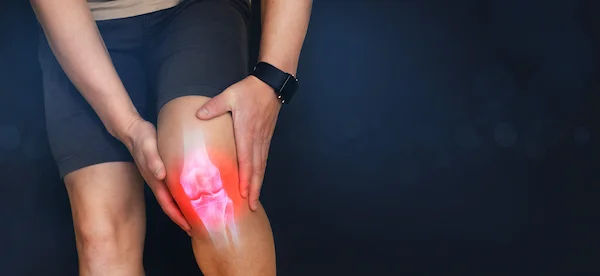
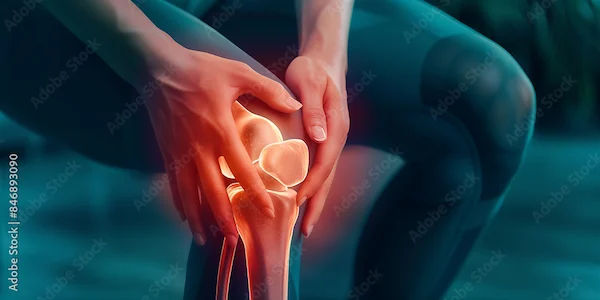
.webp)
